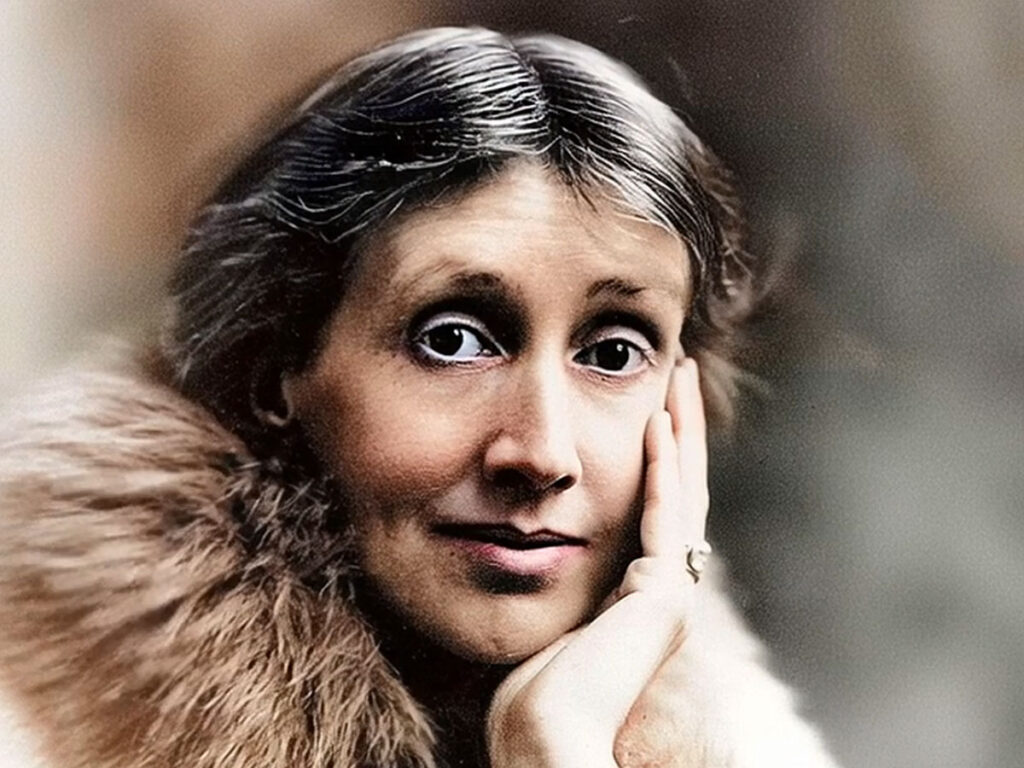
Virginia Woolf has secured her place in literary history as a writer who dismantled established conventions. The celebrated American critic Harold Bloom included her novel Orlando: A Biography in his Western Canon, placing it alongside the greatest works of world literature.
Woolf stands as a modernist icon alongside figures such as James Joyce, T.S. Eliot, and Marcel Proust. Her prose, rich in introspection and psychological depth, was radically innovative in an era dominated by linear narratives. Behind this image lies a life both extraordinary and challenging.
Writing While Standing
Woolf preferred to work at a tall oak writing desk. She believed that standing while writing gave her energy and promoted clarity of thought. For her, writing was a physical act in which the rhythm of words resonated with the rhythm of the body.
The Bloomsbury Group
She was one of the central figures of the Bloomsbury Group — a circle of artists and intellectuals in the early 20th century who championed creative freedom, liberal ideas, and breaking social conventions. Alongside Woolf, the group included Leonard Woolf, E.M. Forster, Vita Sackville-West, and Roger Eliot Fry.
Publisher and Translator
In 1917, Virginia and her husband Leonard founded the Hogarth Press. The publishing house printed and bound books themselves, bringing to the public works by T.S. Eliot and Katherine Mansfield. Under its imprint, they also published an English translation of Fyodor Dostoevsky’s The Devils, for which Woolf shared responsibility.
Narrative Experiments
In her novels, Woolf used the stream of consciousness technique, abandoning traditional, linear storytelling. In To the Lighthouse and The Waves, she intertwined narrative with her characters’ inner monologues, introducing poetic impressionism, subtle shifts in perspective, and a deliberate break from realism
Diaries and Letters
Woolf kept extensive diaries and letters that are invaluable for understanding her views, relationships, and struggles with bipolar disorder. They offer a key to grasping the depth of her literary work.
The Final Letter
In March 1941, sensing a relapse of her illness, she left her husband a letter full of love and gratitude:
Dearest, I feel certain that I am going mad again. I feel we can’t go through another of those terrible times. And I shan’t recover this time. I begin to hear voices, and I can’t concentrate. So I am doing what seems the best thing to do. You have given me the greatest possible happiness. You have been in every way all that anyone could be. I don’t think two people could have been happier till this terrible disease came. I can’t fight any longer.
She then walked into the River Ouse with her pockets filled with stones. Her death became a symbolic, though tragic, conclusion to a life of intense creative passion.
Virginia Woolf remains a symbol of artistic courage and literary innovation. To explore her life in greater depth, we recommend:
- Hermione Lee, Virginia Woolf (1996) – a detailed, monumental study of her life and work.
- Quentin Bell, Virginia Woolf: A Biography (1972) – a classic biography written by her nephew.
